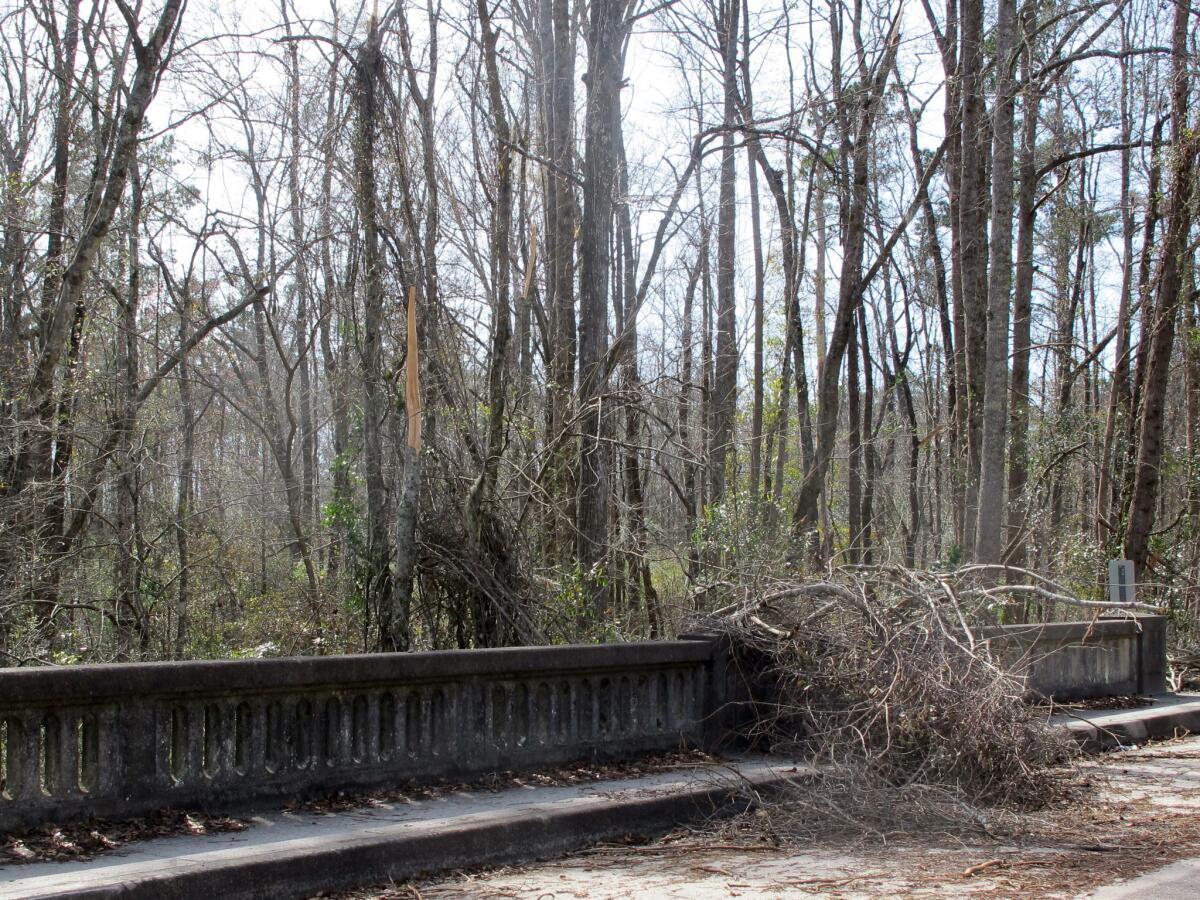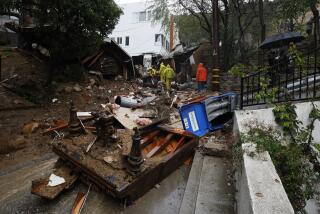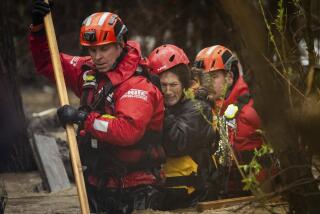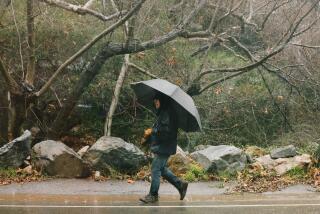Ice storm costs South Carolina $360 million in timber

Snow, sleet and frozen rain damaged a year’s worth of South Carolina’s timber harvest last month, making it the most damaging storm in the region since 1989, officials reported.
About 11% of the forestland was significantly affected by the pre-Valentine’s Day storm, which left an inch of ice across half of the state. Though most of the $360 million in damage was considered “light” by the South Carolina Forestry Commission because some of it could be salvaged, the agency declared a disaster and called on timber companies Wednesday to save as much as they could.
The rest of the South also felt the wrath of the storm, which shut down schools and businesses and snarled traffic from Feb. 10-13.
The storm claimed about $65 million worth of timber in Georgia, the state’s Forestry Commission said last week. Among casualties there was the famous Eisenhower Tree, a pine on the Augusta National golf course that was said to have repeatedly caught the former president’s tee shots.
Other states have yet to report forestry damage figures.
In South Carolina, the storm was the worst since 1989’s Hurricane Hugo, which wrecked 2.5 years worth of timber in a night. Foresters ended up salvaging 15% of the timber and recovering about 10% of its value, South Carolina State Forester Gene Kodama said.
“Our state’s forests, like those across the rest of the South, are resilient,” Kodama told the Los Angeles Times. The forests “have endured Hurricane Hugo, major pine beetle epidemics and other ice storms during the past 25 years,” but have more wood than ever before. “So, the forests can bounce back and will do so even more quickly with rapid salvage and re-planting of damaged sites.”
The forestry industry is South Carolina’s largest employer. And those workers face a busy spring.
The combination of wind, ice and bitter cold snapped off branches, deformed trunks and stunted some growth. Much of the damage was in small pockets spread across 1.5 million acres, making it difficult to access, Kodama said. Chopping up the sunken inventory in tight areas could damage nearby trees.
But the dead growth increases fire risk and will begin to rot by fall. The dead trees also could invite pests that could damage surviving trees.
Officials expect timber companies to focus on recovery in areas where young surviving trees are at risk and replanting in areas declared destroyed.
Kodama estimated that about 10% of the “lightly damaged” wood could be brought to market, but will generate lower prices. A small portion of the affected acreage would be re-planted by landowners, the commission said, but re-seeding won’t come cheap.
Much of the damage was to young trees -- 15 to 25 years old -- that are used to produce paper. They were already in short supply.
Bob Abt, a professor of forestry at North Carolina State University, said the importance of those trees is reflected in the urgency from state officials.
“It’s the fact that younger age classes are most affected and that they are already concerned about the number of younger acres that raised this to a level of state of an ‘emergency,’” Abt told The Times in an email.
The forest agency’s disaster declaration urges landowners, foresters, loggers, mill operators and state leaders to cooperate on a quick recovery effort.
Getting thousands of farm owners to invest in re-planting the most damaged acreage could be challenging, said Cam Crawford, the South Carolina Forestry Assn.’s executive director.
“There’s some people who will take a big hit,” Crawford said. “They have to be convinced it’s a worthwhile investment to re-plant, and that’s where these government programs can help out.”
Specifically, timber companies can start applying next week for grants from the U.S. Farm Service Agency. The funding still has to be authorized by federal officials.
“Our industry will survive,” Crawford said. “But to thrive we have to re-plant those prime trees that were lost.”
Follow LATimes National on Facebook
ALSO:
Judge in general’s trial to decide whether to show porn in court
Residents leap from windows as fire engulfs Detroit apartment building
Shocking Daytona Beach scene: Mother drives minivan with kids into sea
More to Read
Start your day right
Sign up for Essential California for news, features and recommendations from the L.A. Times and beyond in your inbox six days a week.
You may occasionally receive promotional content from the Los Angeles Times.







